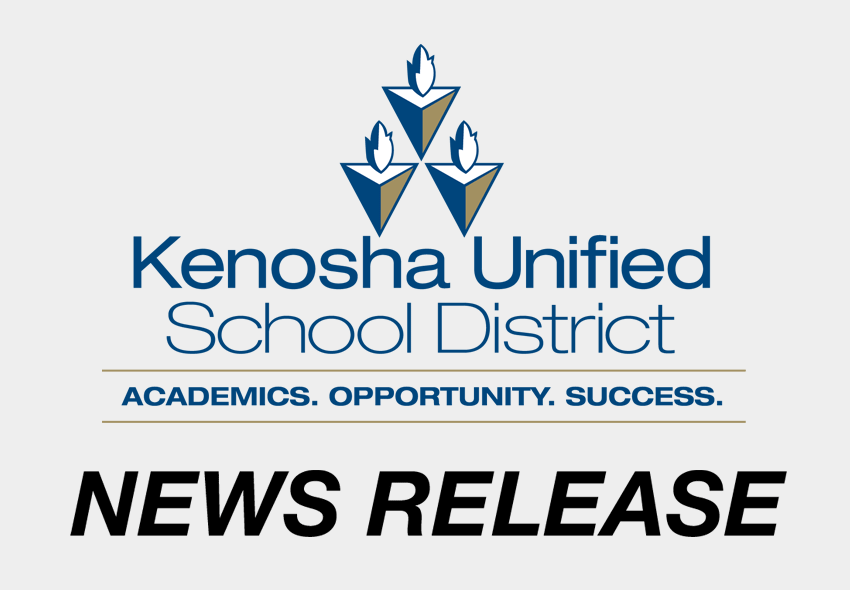The leaders of the five largest schools districts in Wisconsin sent the following letter to members of the state legislature today in response to the recent action by the Joint Finance Committee:
Members of the Wisconsin Legislature:
In March 2020, as COVID-19 swept through Wisconsin, public school educators, administrators, and board members moved extraordinarily quickly to shift the way teaching and learning took place.
They adopted new and innovative methods of delivering essential services, such as providing nutritious meals and internet access for students. As the pandemic continued into the fall of 2020, all Wisconsin school districts had to plan, prepare, and deliver education services amid ever-changing circumstances and ongoing—and at times, inconsistent—guidance from federal, state, and local health experts.
As superintendents of the five largest school districts in Wisconsin, we write to you on behalf of our more than 150,000 students. Combined, our districts serve nearly 20 percent of the state’s public school children, including disproportionately high numbers of students in poverty (104,532), students whose first language is not English (23,516), students who have faced trauma, and students negatively affected by deep healthcare disparities.
The enormous challenges faced by all Wisconsin schools were even more staggering in the state’s five largest school districts of Green Bay, Kenosha, Madison, Milwaukee, and Racine, also known as the “Big 5.” In many ways, COVID-19 has exacerbated the growing disparities and inequities across our schools and communities.
It is important to note that education never stopped, even though buildings may have been closed. Our teachers and administrators have made herculean efforts to ensure students could successfully learn in virtual, hybrid, and in-person settings.
In a similar manner to businesses across the country, which had to fundamentally pivot their operations, we needed to adjust to the new reality. This meant making huge infrastructure investments to ensure our students and our combined nearly 25,000 staff members remained safe, our schools continued to function, and we could address key questions like the following:
How could we ensure our students—who depend on the two or more meals a day they receive at school—would continue to be fed, knowing they faced food insecurity at home?
How could we stay connected with our students and their families when they have no internet or computers at home?
How could we support older students, who were trying to learn from home when they were the providers of childcare for their younger siblings and responsible for walking them to and from food distribution sites daily to pick up food, as their parents were frontline workers and daycares had been closed?
How could we ensure students maintained their literacy skills, knowing that many families did not own books and that libraries were closed?
How could we support students and their families—again, many of whom were frontline workers—facing the trauma of ill or dying family members due to COVID-19?
The pandemic forced the Big 5 districts to spend millions on meeting the most basic educational, nutritional, physical, and mental health needs of our students, rather than hiring additional teachers or social workers. To date, the Big 5 districts have delivered more than 10.5 million meals to students. We have also spent millions of dollars on the purchase of digital devices, along with mobile hotspots to connect students to the internet. Finally, we hired a new workforce for the purposes of contact tracing and substitute teaching.
We have spent millions more on barriers and other protective items to keep students and staff safe, including thousands of gallons of hand sanitizer, more than a million disposable gloves, over 7 million face coverings, and thousands of containers of disposable sanitizing wipes. As we emerge from the COVID-19 pandemic, we have been planning ahead on how to use the federal Elementary and Secondary School Emergency Relief (ESSER) money, which will allow Wisconsin districts to take novel approaches to mitigating the disruption to our students’ education caused by the pandemic. These one-time dollars provide a unique opportunity to work with our community partners to address inequities in our school communities.
We are dismayed that the legislature’s Joint Finance Committee voted to place ESSER dollars at risk. Our districts have engaged in many novel approaches and partnerships with our communities to address the disruption and trauma our students are facing. The JFC action has led school districts to halt their planning efforts, as they do not know whether the expected federal resources will be forthcoming. This is regrettable and will adversely affect Wisconsin students.
Public school leaders remain focused on meeting the needs of every student, no matter their life circumstances. For the Big 5, this commitment extends beyond individual students to our state, as we know that the seeds of Wisconsin’s economic and social future are planted in our schools. When we say we must meet the needs of all students, we truly mean all.
We are at a unique time in our state's history. As we emerge from this pandemic, the federal government has made a historic investment in American schools, distributing funds based on students’ needs. These one-time investments will not only provide necessary resources, but also have a significant, positive impact on the economic and social future of our state.
The state of Wisconsin has the financial resources to support the governor’s funding proposal for K-12 schools. This is a moment that calls for setting aside partisan differences and recognizing that an investment in our children now will have a long and lasting impact on the wellbeing of our state.
The fact is that the children of Wisconsin, including students in the Big 5, can count on their public schools—just as they always have. As we emerge from the pandemic, we hope we can count on the state legislature to support all of Wisconsin’s PreK-12 public education students by providing for the important investments they need in the state budget.
Sincerely,
Mr. Stephen Murley
Superintendent of Schools and Learning
Green Bay Area Public Schools
Dr. Sue Savaglio-Jarvis
Superintendent
Kenosha Unified School District
Dr. Carlton Jenkins
Superintendent of Schools
Madison Metropolitan School District
Dr. Keith Posley
Superintendent of Schools
Milwaukee Public Schools
Dr. Eric Gallien
Superintendent of Schools
Racine Unified School District

